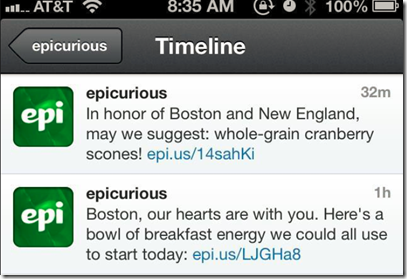Some subjects are more difficult to produce content for than others.
While big brands can be filled with shiny, happy people, photoshopped smiles and upbeat music, there are plenty of industries that, due to their subject matter, need to take a more subdued approach.
- Funeral care, foster homes, medical aid and charities are all among the types of organizations that need their content to be both thought provoking and respectful.
This can make things difficult for marketers – the typical design of content is to grab attention and push audiences into action, but with sensitive industries, it’s often not appropriate to be too overt and radical in presentation.
- The messages you show have to be perfectly in keeping with the expected, respectful tone of the subject matter.
It’s important to hit the right note when making content on sensitive issues.
Let’s have a look at some of the best ways to approach this kind of marketing, and how to avoid alienating or upsetting audiences whilst still motivating them to take action.
While these rules can apply to all types of content, including text, social media content and even physical advertising, I’m going to primarily be using videos to emphasize my points.
- Bear in mind that these ideas are appropriate no matter what medium you’re using, although they may need to be adapted depending on how you’re presenting your content.
Being Honest
There are a lot of potential messages that you might want to get out of your marketing.
- You might want to provide gentle yet unobtrusive encouragement for potential customers who are going through a hard time.
- Alternatively, you might be looking to shock audiences into action, without being overly offensive or upsetting.
- You might even be trying to do both at once – grabbing audience attention whilst avoiding being too pushy.
These can be difficult positions to match up ideologically, and if you’re not careful your content won’t be respectful to those who might be suffering.
- After all, not all businesses ought to draw too much attention to themselves.
- Being too vocal or not choosing the right tone in your content may damage your organization’s reputation.
To give you an appropriate goal to aim towards in your content, it’s best to strive for honesty.
No matter what, your content should convey sincerity.
- Working towards showing a faithful representation of the issue at hand will ground your content in reality.
- This will make it meaningful and relatable for those who feel strongly about the issues you’re discussing.
Through giving people an accurate reflection of the difficult subject matters you’re tackling, you can ensure that your tone will match what’s expected.
But how can you make your content honest and sincere? The trick is to tell a human story.
Focus on People
Statistics can be harsh and uncaring.
If you’re creating content on behalf of a charity, listing the number of people who suffer from your target ailment or problem probably won’t make people stop and look.
- The bigger the numbers are, the more people are able to distance themselves from the true human impact of a negative world event.
- The human brain struggles to comprehend numbers, and suffering that it can’t physically see is filtered out because it’s too abstract.
- This might sound harsh, but it’s a necessary reality of life – if we all cared deeply about every report of anybody suffering, we’d all become paralyzed from constant grief.
To help people understand the subject matter more clearly, it’s best to focus on individuals and the impact that an event, circumstance or situation can have on a person or family.
This way, the brain is able to gain context, and can sympathize with what it’s being told about the effects of sensitive issues.
This is the common theme in a lot of charity advertisements:
- Instead of giving a long list of the specific details of what people are facing, or doling out information about the number of people who are suffering, ads will often focus on a single person, human faces, and the suffering caused by a particular situation or struggle.
Here’s a good example of a video which uses a human experience to draw attention to a wider problem:
The video above, which tells the story of one woman’s struggles to provide clean drinking water for her family in one of the most harsh, arid environments on earth.
- The video is honest, showing how scarce and precious water is in some impoverished communities, and also focuses on a single face that viewers can empathize with.
- The problem of water scarcity stops being a numbers game, and instead shows viewers the kinds of people they can help if they choose to support the charity behind the video.
Similarly, to give your content emotional, meaningful depth that people can relate to, you should focus on the stories of real people who are influenced or affected by the issues at hand.
Let Someone Else Tell the Story
Telling the honest, true and human story behind a particularly sensitive subject isn’t always easy.
- Often it’s the case that, as marketers, we haven’t got first hand experience of the issue ourselves, making it even more difficult to do the subject matter justice.
While the temptation might be to go ahead with creating content anyway, it’s difficult to give stories the right emotional weight and impact when you haven’t been personally affected by the issue at hand.
For that reason, often the right approach with difficult issues is to hand over the content creation to somebody who knows what they’re talking about.
A marketing campaign that is really doing an excellent job of using the true voice of people behind its issues at the moment is that of the US Presidential hopeful Bernie Sanders.
Leaving aside the issue of politics, let’s have a look at a videos his campaign has produced and how they let a real person do the talking.
The above video was created by Sander’s campaign team, but instead of dwelling on the Presidential hopeful, it tells the story of Erica Garner, a black rights activist whose father was killed when he was put into an illegal chokehold by a police officer live on television.
- In the video, Garner discusses how she has to explain to her daughter the challenges of racism that their community faces, and why she actively campaigns for equal rights.
Bernie Sanders, despite funding the campaign, doesn’t make an appearance until the tail end of the video, as Garner, having finished telling her own story, then explains why she feels that Sanders is the best candidate for the presidency.
Garner has spoken about the video, saying that Sanders’ press team had given her complete creative control over the filming of the video and its content, and that the message is ‘100%’ her own opinion.
- She said: ‘They had a totally different idea of what should be done, but true to form with Senator Sanders, he listened to me, didn’t tell me he knew better and I was not practical and this is what we produced.’
This is an excellent example of the kind of emotional weight that a piece of marketing content can only gain through letting someone express their own personal experience.
- Were the video scripted by someone who was detached from the issues at hand, it wouldn’t have carried the same emotional weight.
- Trusting Garner to produce a video with her own message also means that her endorsement carries more authenticity.
When in doubt, it’s always better to tell the story of someone who’d deeply involved with a sensitive issue rather than try to create something without a full understanding of the emotional experience that those involved are going through.
Through letting people tell their own stories, it’s possible to create something tasteful yet evocative which will turn people’s heads but still be respectful to a serious issue.
Be Kind
Depending on the issue you’re dealing with, it’s easy to create content that’s emotional and compelling, and which inspires a sense of guilt in your audience.
- Years ago, this tactic was popular for drumming up support: viewers of scenes of poverty would be shocked into supporting a cause.
- It’s still possible to shock audiences, but some of the power has gone from guilting people into action.
The problem with consistent negative messages that make audiences feel like they’re to blame is that eventually people become desensitized to the suffering of others.
- This phenomenon is called compassion fatigue – it means that people have seen depressing images of suffering so often that they’ve stopped being shocked by them.
While there’s power in making people sit up and take notice through showing sad situations, overly trying to guilt trip your audience will force them to switch off emotionally: there’s only so much suffering people can tolerate before it loses meaning.
Similarly, placing blame on audiences for not getting involved with issues may shock them at first, but it loses its power before long.
Instead, it’s important to be kind to your audiences, through showing them enough serious issues to get them motivated without overwhelming them.
Beware Trauma Triggers
There’s a second side to the issue of over stimulating audiences with shocking material, which can be potentially very harmful.
Plenty of sensitive issues can be particularly taxing on people who have personal experience of the subject matter.
- Depending on how explicit your depiction in content, both in text, video and imagery, messages can end up deeply impacting audiences to the point that they experience negative emotions and reactions.
- These are called triggers, and are particularly common for those suffering from post-traumatic stress disorder, although they can also affect people who are emotionally vulnerable for other reasons.
- It doesn’t help your content if, in an attempt to open a genuine and honest discussion about a sensitive issue, it causes sufferers and survivors intense psychological and emotional pain.
So while your content should be honest, open, and from the perspective of someone who’s personally experienced your subject matter, it’s important not to go to dark, be too somber, or too explicit when discussing themes.
It also helps if a content starts with a trigger warning for the sensitive topics you’ll be discussing, if anything that might cause emotional distress is present.
End With A Smile
In connection with the above point, it’s important to present hope in your content.
Audiences need to know that your issue isn’t hopeless – there needs to be a light at the end of the tunnel, and something that can be done to fix the problem.
- This helps to point your audiences towards taking the action that will help improve the situation.
It’s important to focus on your call to action, and the improvements that audience involvement can achieve.
A solid call to action can run through the entire video, and it’s possible to focus on an uplifting message even when dealing with a sensitive subject matter.
Take for example this Water Aid campaign video, which was designed to encourage viewers to donate to a clean water campaign.
The video takes a moment to point out the human suffering that the campaign is aiming to alleviate, but it only touches on this briefly.
- Instead, the rest of the video shows the difference that donations can make, with uplifting music and smiling, happy faces of people who’ve been touched by existing efforts to raise money.
- The video doesn’t depress audiences – it doesn’t shy away from the harsh reality of the situation, but its main focus is on getting people to see how they can bring happiness to others.
It’s also important to note that the video references its call to action throughout.
- Viewers are aware right from the start that they’re watching a video about an effort they can make to help others.
- This video was also spread primarily through Instagram, meaning that in addition to donating, viewers also felt encouraged to take action by spreading the news of the campaign further.
This same marketing strategy was used with the Ice Bucket Challenge to raise money for ALS a few years ago, which saw celebrities and ordinary people getting involved, sharing videos, and encouraging their friends to get involved.
- Almost no emphasis was put on guilting viewers into action – instead, the focus was on having fun, playing games and doing good for others.
Using an uplifting, positive message is easier to get people talking.
Don’t Be Afraid To Have Fun
Considering the need to be careful not to offend or upset audiences, many marketing campaigns which deal with sensitive issues tend to avoid ideas with any levity to them.
- After all, being flippant with the wrong subject matter can potentially create controversy as marketers get accused of not taking the issue seriously.
That said, while it’s important to be respectful about sensitive issues, there’s still room to engage audiences with interesting and entertaining content.
Recently, a movie about an ultraviolent superhero named Deadpool has been making waves at theaters, drawing in unexpectedly large crowds considering that the character isn’t hugely familiar to most audiences.
One of the reasons why this movie has been doing so well is because of its particularly inventive advertising campaign, which included, among other things, a pair of videos for cancer awareness.
[EMBED https://www.youtube.com/watch?v=KsdD1MJXOpk]
This might sound like a strange choice, and one that could end up offending or upsetting people:
- Cancer is a serious issue about which people have strong feelings, which shouldn’t be made light of.
- Considering how easy it is for content to appear to be taking advantage of a sensitive subject for callous personal gain, this decision could easily have gone wrong for the Deadpool marketing team.
Interestingly, though, the videos were very well received – many people praised them for providing helpful and important information.
The videos, while humorous in tone, tell viewers how to perform their own examinations to spot the development of potentially dangerous lumps.
It’s important to note that this content is particularly well designed to avoid the misuse or misrepresentation of a sensitive subject matter:
- The movie’s central character, Deadpool, suffers from aggressive terminal cancer – as such, the videos are relevant both to the movie and to the subject of cancer awareness.
- The videos don’t make fun of cancer victims – while they’re comical, the jokes are inoffensive and serve to draw attention towards education about early cancer detection.
- While the videos point out the upcoming movie to viewers, the primary focus of the content is drawing attention to the potential dangers of avoiding cancer warning signs – viewers don’t feel like they’ve been beaten over the head with a message about a comic book movie under the flimsy premise of teaching about cancer.
There’s even a certain amount of psychological benefit to giving sufferers from various sensitive issues a way to laugh at their circumstances – being able to see their problems openly and honestly discussed can be a big relief for those who otherwise are forced to suffer in silence.
Obviously, not all subjects can be discussed in this way – it depends on the nature of the sensitive issues surrounding the problem at hand.
- Any attempts at injecting humor into a campaign should be taken carefully so as not to offend or upset people.
That said, there’s nothing wrong with giving sufferers an opportunity to discuss their challenges openly, even if that means doing so with a more relaxed and less somber tone.
Avoid Hashtag Opportunism
One more thing that all marketers, regardless of the sensitivity of your subject matter, should be aware of:
- Nobody likes brands that piggyback off of human suffering.
That sounds pretty obvious, but believe it or not, it’s common to see brands attempting to capitalize on tragedies or big current events as a way of drawing attention to their brands.
- These are often misguided attempts at agile marketing and getting in quick before a talking point gets too saturated online.
- These attempts to use current events can often go awry is a message feels impolite or disrespectful.
Think Before You Post
If you only take one lesson away from this article, let it be this:
- Be careful with your content.
It only takes a small mistake or not thinking through the potential misreadings of your content to create something that offends or upsets audiences.
Getting people talking about your brand is good, but if you’re dealing with a sensitive subject matter, it can really hurt your reputation to end up on the wrong side of a controversy.
As long as you’re being careful with the messages you deliver, you can help people to see your cause in the right light:
- Be honest without being too graphic or explicit.
- Tell personal stories and let real people do the talking.
- Focus on providing uplifting messages, and don’t be afraid to have fun where appropriate.
- Leave audiences with a strong call to action so that they’ll go out and engage with your brand in the appropriate way.
Taking the time to carefully plan your content can be the key to creating messages that are meaningful, thought-provoking and inspiring.
Do you have experiences of creating content on sensitive subject matters? What are some examples of good or bad content you’ve seen in the past? Feel free to share your thoughts in the comments below:
Images: Pixabay, Pixabay, Wikipedia, Flickr, Flickr, Pexels, Flickr, Margin Media, Flickr.











